Topic 1: Cell biology 
This page contains multiple choice questions in the style of Paper 1 of the Biology exams.
They test the breadth of your knowledge of the understandings and skills about cell biology.
To spend more time reviewing the topic before answering these questions, use the revision resources.
Cell biology revision resources
This page lists the understandings and skills expected for Topic 1 and links to the sub-topic pages which contain detailed revision notes, activities and past paper style questions. Great for revision.
Learn from any mistakes. Every question has an examiner's explanation that appears when you check your answers.
Cells today come from pre-existing cells. The origin of the fist cell must be different.
Where do biologists think the first cell came from?
The first cell must have come from non-living material. This material must have contained molecules which today we consider as organic, carbon containing molecules.
The DNA of eukaryote cells is organised into chromosomes
What happens to the DNA at prophase in the beginning of mitosis?
Chromosomes condense by supercoiling during mitosis. This makes the chromosomes visible.
The DNA replicates during interphase, not prophase.
Identify the stage of mitosis for the two cells X and Y.
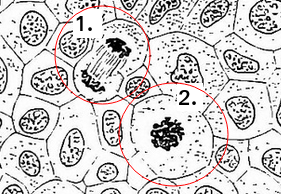
Skill: Identification of phases of mitosis in cells viewed with a microscope or in a micrograph
(prophase, metaphase, anaphase and telophase).
Sodium channels are made from a protein.
Where in the cell are sodium channel proteins found?
Sodium channel proteins are found spanning the plasma membrane. Their structure helps the function for facilitated diffusion in cells because they allow ions to pass cross the membrane.
If the protein was not a trans-membrane protein then it would not be able to transport ions across the membrane.
The graph below shows the % change in mass of carrot parenchyma slices at different concentrations of sucrose.
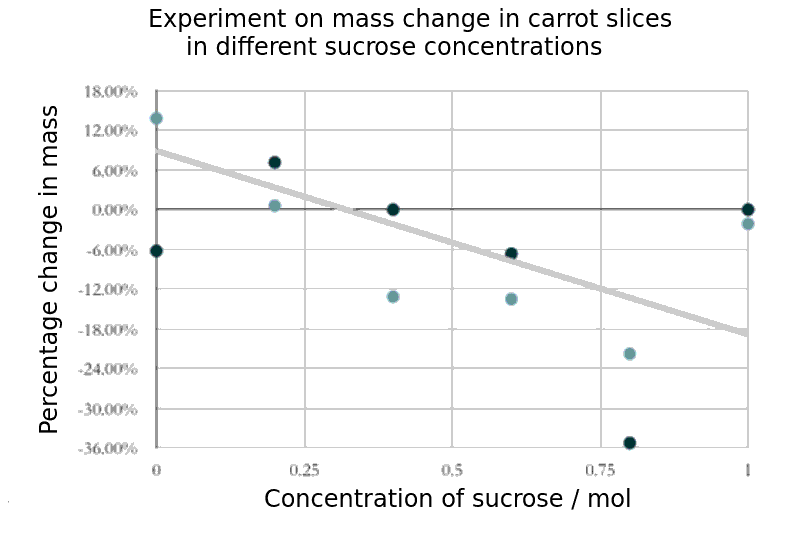
Which of the following is the best estimate of the molarity of the cytoplasm of these cells?
When a sample of cells show no change in mass, then the net movement of water by osmosis must be zero. This shows the concentration of the cytoplasm of the cells. In this graph it would be about 0.3 mol
What effect does reducing the amount of cholesterol in a cell membrane have on its properties?
Cholesterol is a component of animal cell membranes. Application: Cholesterol in mammalian membranes reduces membrane fluidity and permeability to some solutes.
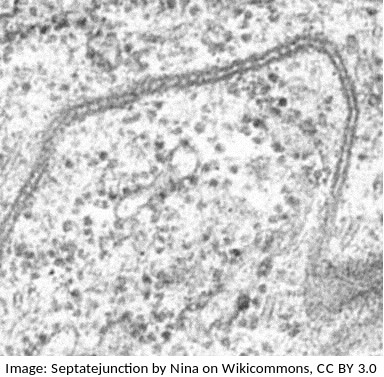 The photograph is from an electron microscope image of a membranes.
The photograph is from an electron microscope image of a membranes.
Parallel dark lines are clearly seen.
In electron micrography, heavy metal stains are often used to enhance contrast. DNA and Proteins often show as dark areas because these molecules can attach to the stain.
Which of the following interpretations is most similar to the proposal of the Daveson-Danielli model of membranes?
Students are expected to know how to use evidence from electron microscopy to support an idea about membranes. One illustration of this is the proposal of the Davson-Danielli model.
Further evidence lead to the falsification of the Davson-Danielli model and the proposal of the fluid mozaic model.
This electron microscope image shows a group of prokaryotes.
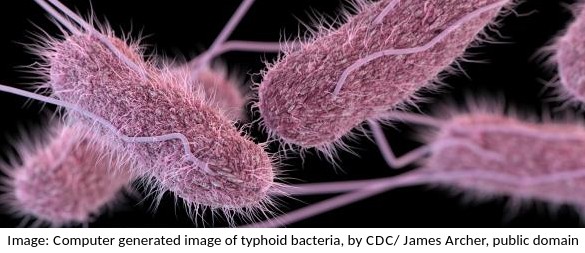
What structures are most likely to be found inside these cells?
Skill: you should know how to draw prokaryotic cells (with a cell wall, plasma membrane, cytoplasm, pili, flagella, 70s ribosomes and nucleoid.) and eukaryotic cells (free 80s ribosomes, rough endoplasmic reticulum (rER), lysosome, Golgi apparatus, mitochondrion and nucleus)
The 'Cell theory' explains the nature of living things.
Which statement best describes Cell theory?
According to cell theory, living organisms are composed of cells.
Cells come from pre-existing cells and cells are the smallest using of life.
If you know someone with a disease that might be cured by stem cell therapy then you might be a supporter of this research. You probably also know that some other people have deep concerns.
Which of the following is not a potential benefit of the use of stem cells?
There are ethical concerns about the use of embryo stem cells.
The research is expensive, and potential treatments are also likely to be expensive, and probably not available to all.
Many people who are against stem cells say that it is because cells are taken from human embryos, which have the potential for human live, and should be protected. There are other sources of stem cells, they argue.
The diagram shows the transport of sodium ions across a membrane.
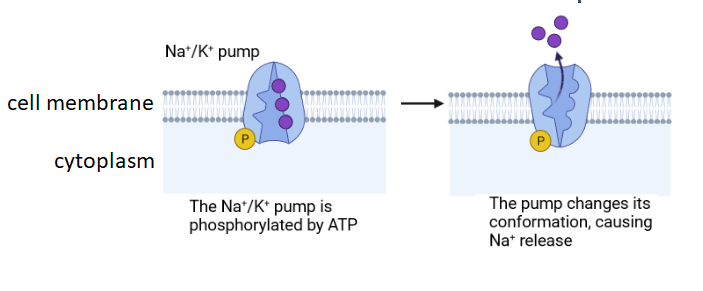
Which explanation gives the best description of the type of membrane transport shown?.
Facilitated diffusion does not require energy from ATP so this process is active transport. It can move sodium ions against the concentration gradient, but this is not always the case.
The image below shows a eukaryotic cell.
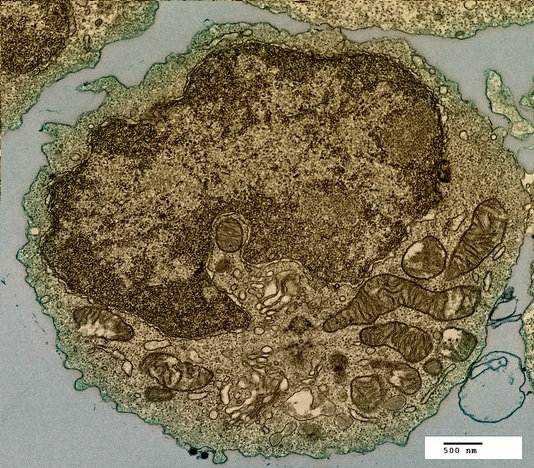
Which structure, visible in the image, could be used as evidence supporting endosymbiosis?
The mitochondria provide evidence supporting endosymbiosis because they have:
- a double membrane
- 70S ribosomes
- DNA
Which phrases most accurately describe a multicellular organism?
Comment: The multicellular condition allows for differentiation into cells of different types and also replacement of cells when injured or damaged.
Which of the following could be used to distinguish a living from a non- living object
Comment: Inanimate objects can move, produce and utilise energy but the process of respiration is exclusive to living systems
What best describes the organism in the light microscope image?

It is unicellular (one cell) and a eukaryote (has a nucleus) and not autotrophic.
What is the approximate length of the bacterial cell in the image?

The scale bar is 1 µm and the bacterium is approximately 3 times the length of the scale bar.
The image is of a prokaryotic cell. Which feature defines the cell as prokaryotic?

The lack of a membrane bound nucleus (nucleoid) classifies a cell as prokaryotic.
The image shows a transverse section of a plant cell seen using an electron microscope.
What is the main function of the large organelle (A) seen in the cell?

The organelle shown is the nucleus, it stores the genetic information, DNA and is the location of DNA replication and Transcription.
The diagram is of a plasma membrane. Which label corresponds to an extrinsic glycoprotein?

Extrinsic proteins are on the outside of the membrane, glycoproteins have carbohydrate prosthetic (side) groups (shown by the hexagonal shape).
Which property of stem cells is important for embryonic development?
Stem cells can divide and differentiate along different pathways. For a single fertilised egg cell to grow into an embryo both these processes are necessary.
Refresh this page to try a new set of 20 multiple choice questions. The questions will be different next time you visit. Great revision.

 Twitter
Twitter  Facebook
Facebook  LinkedIn
LinkedIn